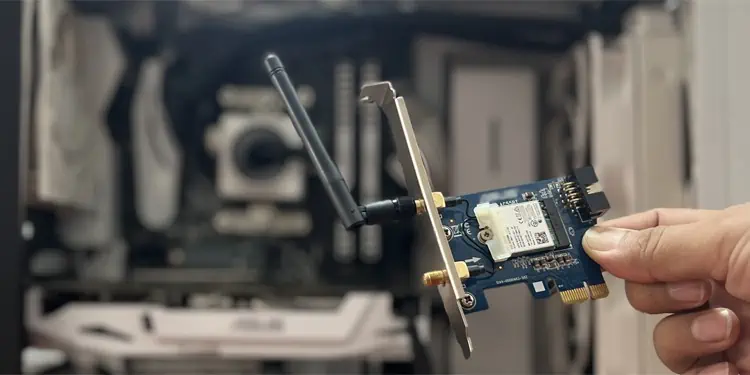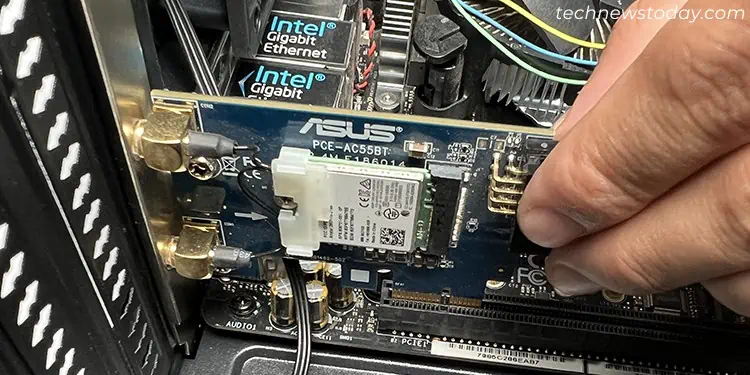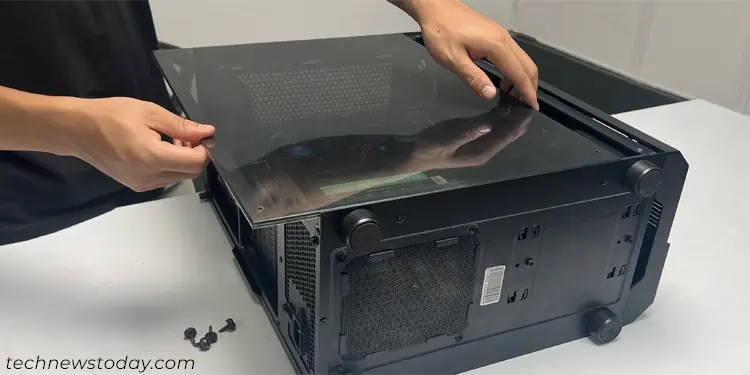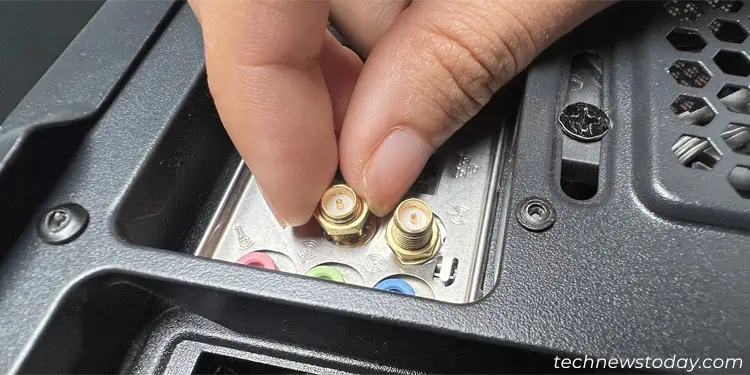If you want to have Wireless capabilities in your ASRock motherboard, you need to install a WiFi card on the motherboard. You will also need to install the antennas as well to be able to catch the wireless signals properly. Otherwise, the signal that the card will catch will not be enough.
If the Wi-Fi card comes pre-installed with your motherboard, you only need to connect the antenna to the motherboard’s connectors. Otherwise, you need to install the card, attach the antenna connectors to the motherboard’s I/O shield or back panel and then connect the antennas.
The built-in WiFi card on my ASRock motherboard stopped working after a couple of years. So, I installed a PCIe x1 WiFi card. You can also use a M.2 WiFi card if you have a corresponding slot on your motherboard. I will guide you through the necessary steps.
Installing WiFi Card on ASRock Motherboard
Some ASRock motherboard can come with M.2 Key E for WiFi. In such casese, you can install an M.2 WiFi card on the motherboard. Otherwise, you need to use a PCIe x1 WiFi card.
Both devices perform similarly if they have similar specifications, so it’s only a matter of which one your motherboard has. If it has both, it’s better to use the M.2 key one as you may be able to use the PCIe x1 slot for other purposes in the future.
You need to buy the corresponding WiFi card and then perform the steps below to connect it to your motherboard depending on the card.
Warning: Make sure to wear an anti-static band to ground yourself and prevent any damage to the electronic components due to electrostatic damage. You can also periodically touch metal surfaces to discharge any built-up static charge from your body.
Otherwise, you should only touch the edges of the circuit boards or metal/plastic surfaces on the computer.
For PCIe x1 WiFi Card,
- Open the side panel of your PC and expose the motherboard.
- Look for the PCIe x1 slot for the WiFi card. If you don’t have a PCIe x1 slot, you can use any other free PCIe slots like PCIe x4, PCIe x16 as well. But keep in mind that doing so will waste the larger card slot.
- Check the metal cover corresponding to the slot and remove it. Depending on the PC case, you need to unscrew and take it out or push it inwards and break it off.

- Insert the PCIe WiFi card into the slot while orienting its metal bracket to the back of the PC case.

- Screw the bracket to hold the card in place.

- Then, you can align the antenna to the connector and rotate it clockwise to screw it in place. Make sure not to force it if you get any resistance to prevent unnecessary damage to the screw threads.

For M.2 WiFi card,
- If have already built your PC and want to install the card afterwards, follow the steps below. Otherwise, you can directly go to step 2.
- Power off the computer and remove all the cables, including the power supply. It’s also better to press and hold the power button for 10-20 seconds first to drain any excess charge on the hardware components.
- Take out the side panel. You will usually need to unscrew it and then slide it out.

- Remove your motherboard from your PC.
- On the I/O Shield, there should be some covered holes, usually next to the wireless symbol. Break off two of the metal covers by poking them with any object. If the cover still remains attached, remove them.
- Insert the antenna connectors on the holes so that the connector part is exposed to the outside part of the I/O shield.
- Place the washer on the connector if it is available.
- Then, align the nut with the connector and screw it in to secure the connector in place.

- Insert the Wi-Fi card into the M.2 slot and screw the other side to secure the card onto the motherboard.
- Then, connect the cables from the antenna connectors to the WiFi card ensuring proper alignment.
- If the cables are of two colors, black and white, check the color of the arrow on the WiFi card to know where each cable should go. Otherwise, you can connect them on either connector.

- Then, properly install the motherboard and the I/O shield on the PC case and assemble all remaining parts.
- Then, you can align the antenna to the connector and rotate it clockwise to screw it in place. Make sure not to force it if you get any resistance to prevent unnecessary damage to the screw threads.
Connecting WiFi Antenna to Pre-Installed WiFi card
Some ASRock motherboards come with a pre-installed Wi-Fi card. If you have such motherboards, you should see two antenna connectors on the I/O shield.
Here, you only need to connect the antennas to these connectors. Align them properly and turn them in clockwise direction to screw them securely.
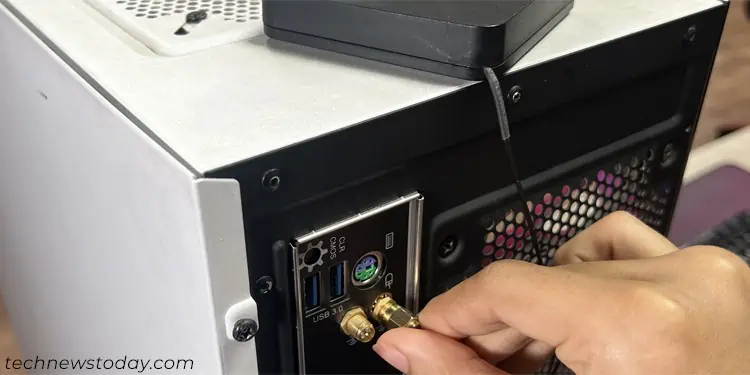
Make sure that you can turn the antenna or antenna cable easily. If you encounter any resistance and try to force it, it can damage the screw threads. You should remove the antenna, align the connectors properly and try again in such cases.
Also, most antenna sticks only swivel about 90°. If you try to force it, the connectors might get dislocated.
Troubleshooting WiFi Card Not Working on ASRock
If your WiFi card or antenna is not working on ASRock motherboard, it may indicate some damage to the antenna cable, connector or the Wi-Fi card. But it’s also possible that the devices are working properly but they can’t catch the wireless signal from your router or modem.
- If you are using antennas with extension cables, make sure there are no breaks in the cable or the places where the cables join the connectors.
- Also, try removing the antennas and reinserting them while aligning them properly to account for improper connections.
- If the antenna connectors are bent, you may need to replace the WiFi card or the connectors.

- If you have two antenna connectors but only one antenna, you can also shift it to the other connector in case the previous one is not working.
- You should also ensure that any solid objects, especially metals, are not obstructing the antenna from getting the wireless signals. The PC case can also block the signals.
- It’s better to set up your PC so that the antenna remains in the line of sight of your router.
- You can try using other types of antenna, especially those that you can place somewhere with more clearance. You can even use USB antenna modules if the PCIe ones don’t work well.
- If it is not a pre-installed WiFi card, you can try checking it if works on some other computer as well.
Other than that, you should also check out our article on Motherboard WiFi Not Working in case the issue is with your motherboard or system instead of the WiFi device.
